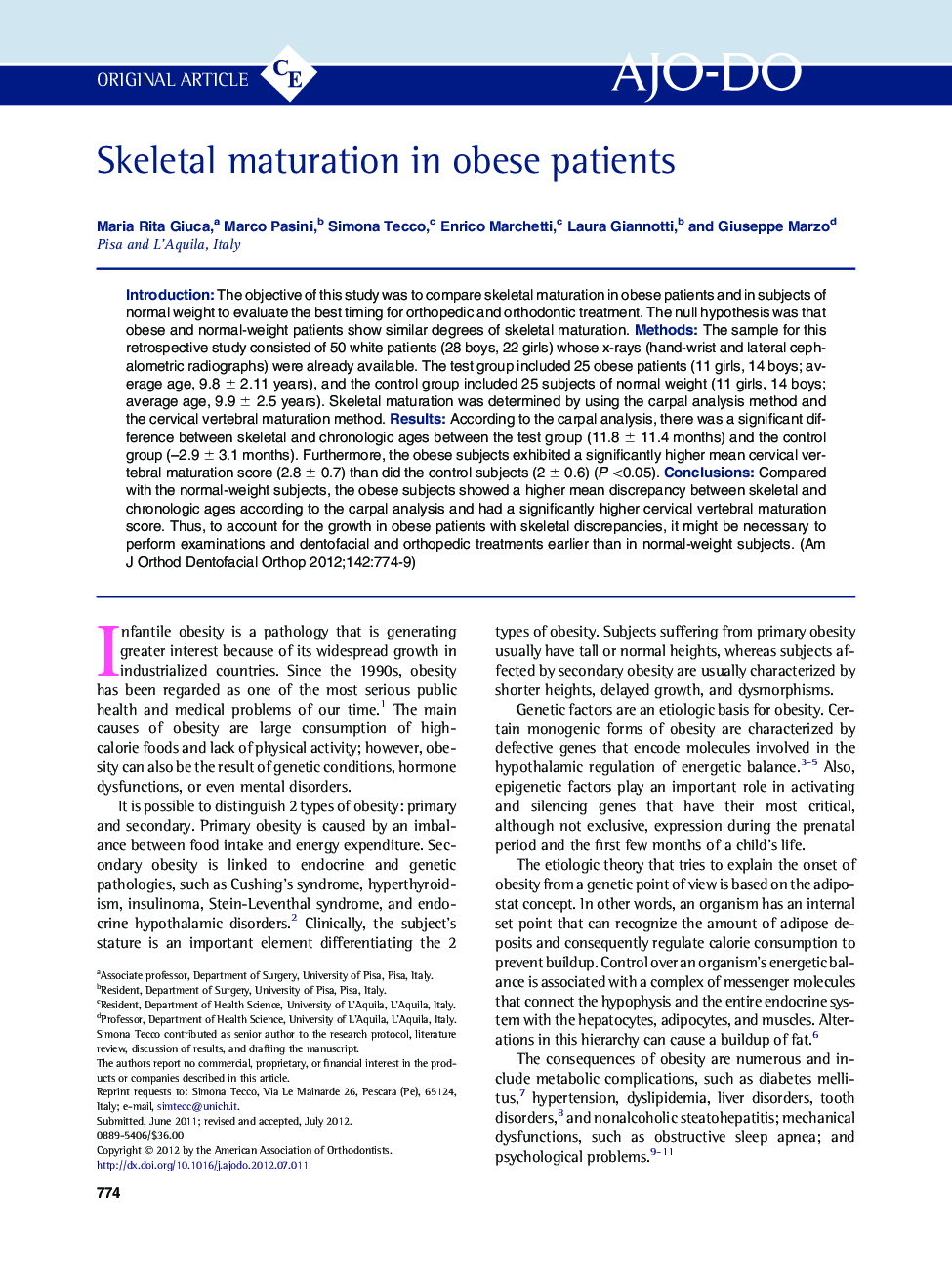| Article ID | Journal | Published Year | Pages | File Type |
|---|---|---|---|---|
| 3116675 | American Journal of Orthodontics and Dentofacial Orthopedics | 2012 | 6 Pages |
IntroductionThe objective of this study was to compare skeletal maturation in obese patients and in subjects of normal weight to evaluate the best timing for orthopedic and orthodontic treatment. The null hypothesis was that obese and normal-weight patients show similar degrees of skeletal maturation.MethodsThe sample for this retrospective study consisted of 50 white patients (28 boys, 22 girls) whose x-rays (hand-wrist and lateral cephalometric radiographs) were already available. The test group included 25 obese patients (11 girls, 14 boys; average age, 9.8 ± 2.11 years), and the control group included 25 subjects of normal weight (11 girls, 14 boys; average age, 9.9 ± 2.5 years). Skeletal maturation was determined by using the carpal analysis method and the cervical vertebral maturation method.ResultsAccording to the carpal analysis, there was a significant difference between skeletal and chronologic ages between the test group (11.8 ± 11.4 months) and the control group (–2.9 ± 3.1 months). Furthermore, the obese subjects exhibited a significantly higher mean cervical vertebral maturation score (2.8 ± 0.7) than did the control subjects (2 ± 0.6) (P <0.05).ConclusionsCompared with the normal-weight subjects, the obese subjects showed a higher mean discrepancy between skeletal and chronologic ages according to the carpal analysis and had a significantly higher cervical vertebral maturation score. Thus, to account for the growth in obese patients with skeletal discrepancies, it might be necessary to perform examinations and dentofacial and orthopedic treatments earlier than in normal-weight subjects.
